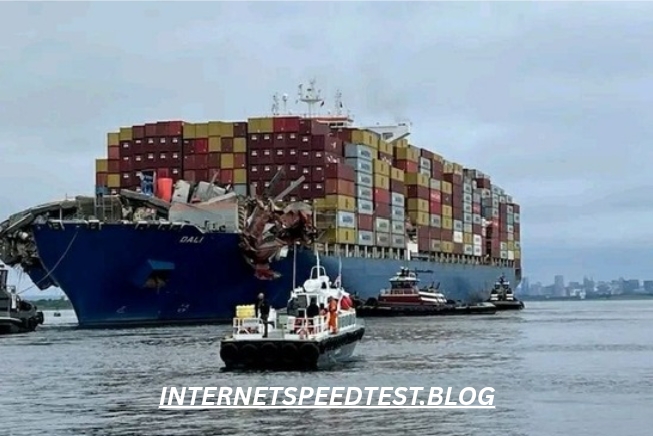Introduction
The Francis Scott Key Bridge is more than just a transportation structure—it is a symbol of history, engineering, and cultural legacy. Named after Francis Scott Key, the writer of “The Star-Spangled Banner,” this bridge connects not only two sides of a waterway but also the past and present of American heritage. In this article, we will explore the historical background, construction, cultural impact, and the present-day importance of the Francis Scott Key Bridge.
This comprehensive guide will cover everything from the bridge’s namesake to its role in regional commerce, architecture, and ongoing discussions about preservation and infrastructure.
Who Was Francis Scott Key?
Before understanding the bridge, it is essential to understand the man behind its name. Francis Scott Key (1779–1843) was an American lawyer, author, and poet. He is best remembered for writing the poem that became the lyrics to the U.S. national anthem.
During the War of 1812, Key witnessed the British bombardment of Fort McHenry in Baltimore. The sight of the American flag still flying after the attack inspired him to pen “Defence of Fort M’Henry,” later adapted into “The Star-Spangled Banner.” His patriotic words became a central part of American identity.
Naming the bridge after him was not only a tribute to a Maryland native but also a recognition of his contribution to American history.
The Location and Importance of the Francis Scott Key Bridge
The Francis Scott Key Bridge stands proudly over the Patapsco River in Baltimore, Maryland. It is part of the Baltimore Beltway (Interstate 695), serving as a critical transportation link for the region.
The bridge provides:
- Efficient transportation for commuters, trucks, and tourists.
- Access to Baltimore’s port facilities, crucial for the shipping and logistics industry.
- A scenic route that offers beautiful views of the harbor and the city skyline.
Because of its strategic position, the bridge is not only an engineering marvel but also a vital economic artery for Maryland and the entire mid-Atlantic region.
Historical Background of the Bridge’s Construction
The need for a bridge arose in the mid-20th century when Baltimore’s roadways became congested. Initially, ferries and tunnels carried traffic across the Patapsco River, but rising transportation demands required a larger solution.
- Construction Began: The bridge’s construction started in the 1970s.
- Completion: It officially opened to traffic in 1977.
- Length: Spanning over 8,600 feet, it became one of the longest continuous truss bridges in the United States.
The structure was designed not only for durability but also with the foresight of handling heavy commercial traffic. Engineers ensured that the design balanced functionality with the aesthetic beauty of Baltimore’s harbor.
Architectural and Engineering Features
The Francis Scott Key Bridge is renowned for its steel-truss design. This type of construction was popular in the mid-20th century for its ability to carry heavy loads across long distances.
Key features include:
- Total length: Over 1.6 miles (2.57 km).
- Main span: 1,200 feet across the Patapsco River.
- Design: Continuous steel through-truss structure.
- Traffic lanes: Four lanes of traffic with space for emergency shoulders.
Its steel framework makes it highly resilient, while its sweeping arches give it a distinct profile against the Baltimore skyline. The combination of strength and design elegance has made it one of Maryland’s most recognized landmarks.
Economic Impact of the Bridge
The Francis Scott Key Bridge is not just a piece of infrastructure—it’s an economic lifeline.
- Commercial Transportation: Thousands of trucks carrying goods use it daily.
- Baltimore Port Access: As one of the busiest ports in the U.S., the bridge facilitates imports and exports worth billions of dollars.
- Tourism: The bridge is a gateway for visitors traveling to Baltimore’s Inner Harbor, Fort McHenry, and surrounding attractions.
Without this bridge, transportation around the Baltimore Beltway would be far more difficult, leading to congestion, delays, and economic strain.
Symbolism of the Bridge’s Name
Choosing Francis Scott Key as the namesake was deeply symbolic. It ties together Baltimore’s historical role in American independence with modern progress. The bridge reminds residents and visitors alike that the same harbor where the national anthem was inspired is also a hub of modern innovation, commerce, and connectivity.
This dual symbolism—heritage and progress—makes the bridge a unique American landmark.
The Bridge in Local Culture
For locals, the Francis Scott Key Bridge is more than just a highway. It plays a role in community life and identity.
- Scenic Views: Drivers often appreciate the panoramic views of the Chesapeake Bay.
- Community Events: Photography contests, documentaries, and local stories often highlight the bridge.
- Pride of Place: Many Baltimore residents consider the bridge a source of local pride, symbolizing strength and resilience.
Maintenance and Challenges
Like many mid-20th-century bridges, the Francis Scott Key Bridge faces challenges related to aging infrastructure. Regular inspections and maintenance are necessary to ensure safety.
Challenges include:
- Corrosion from saltwater exposure.
- Heavy commercial traffic stress.
- Funding needs for long-term upkeep.
The state of Maryland has invested in continuous improvements, including structural reinforcements, repainting projects, and traffic management systems.
Environmental Considerations
The Patapsco River and Chesapeake Bay are ecologically sensitive areas. When building and maintaining the Francis Scott Key Bridge, environmental considerations play an important role.
Efforts include:
- Reducing runoff pollution.
- Monitoring construction projects for ecological impact.
- Supporting conservation programs for marine life in the bay.
By balancing infrastructure needs with environmental stewardship, Maryland demonstrates its commitment to sustainability.
Safety Measures on the Bridge
The safety of commuters is a top priority for transportation authorities. Measures include:
- Surveillance cameras to monitor traffic conditions.
- Emergency shoulders and phones for breakdowns.
- Regular inspections by structural engineers.
- Strict load regulations for trucks.
These precautions ensure that the bridge remains safe for the hundreds of thousands of vehicles crossing it every week.
Tourism and the Francis Scott Key Bridge
Although primarily functional, the bridge also draws tourists who enjoy sightseeing drives. Many visitors combine a trip across the bridge with visits to nearby landmarks such as:
- Fort McHenry National Monument.
- Baltimore Inner Harbor.
- Chesapeake Bay waterfront parks.
The bridge itself, when viewed from the water, is an architectural spectacle that boaters and photographers frequently capture.
Modern Upgrades and Future Plans
With America’s infrastructure aging, there is increasing discussion about modernization. Future plans for the Francis Scott Key Bridge may include:
- Smart traffic technology for smoother vehicle flow.
- Expanded safety lanes.
- Green initiatives like solar-powered lighting.
- Stronger steel reinforcements to extend its lifespan.
Upgrading the bridge will ensure that it continues to meet Maryland’s transportation and economic needs well into the 21st century.
The Bridge as a Patriotic Landmark
Because of its association with Francis Scott Key and its location near Fort McHenry, the bridge is often viewed as a patriotic landmark. It stands as a reminder of resilience in the face of challenges—just as the American flag did during the bombardment of 1814.
Local ceremonies and national observances sometimes feature the bridge in visual tributes, underlining its symbolic connection to American values.
Conclusion
The Francis Scott Key Bridge is not just an engineering structure; it is a living part of American history, culture, and progress. From honoring the author of the national anthem to serving as a vital transportation link, the bridge embodies resilience and continuity.
Its construction represents mid-20th-century engineering achievement, its role in commerce demonstrates economic vitality, and its name reflects national pride. As the bridge continues to stand tall over Baltimore’s harbor, it remains both a physical and symbolic connector—linking past with present, and people with possibilities.




